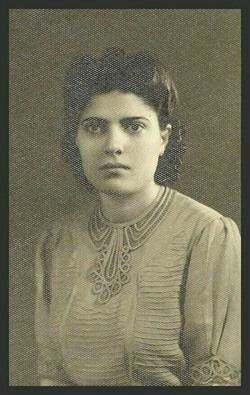Sameera Moussa: Egypt’s Nuclear Physicist Who Dreamed of Cheaper Cancer Treatment
- Daniel Holland

- Jul 15
- 5 min read
Updated: Jul 20

She once declared she’d make nuclear treatment “as cheap and available as Aspirin” — and she meant it. Sameera Moussa wasn’t just a brilliant physicist; she was a visionary who believed atomic energy could heal rather than harm. At a time when the world was still reeling from the devastation of Hiroshima and Nagasaki, and when few women, let alone Arab women, were seen in scientific laboratories, Moussa broke through barrier after barrier.
Born on 3 March 1917, Sameera Moussa made history as Egypt’s first female nuclear physicist, a woman who broke academic ground, pioneered research, and fought to make nuclear medicine accessible to all. Long before STEM was a familiar acronym, Moussa was quietly becoming a powerhouse in physics, blazing a trail not only for Egyptian women, but for generations of Arab women in science.
She wasn’t simply someone who "made it" in a male-dominated field. She redefined the boundaries of what was possible, academically, scientifically, and ethically, during a time when the nuclear conversation was dominated by warfare, not healing.
Early Brilliance in a Turbulent World
Sameera Moussa studied at Cairo University, where she earned her Bachelor of Science in radiology in 1939, graduating with first-class honours. She went on to earn her doctorate in atomic radiation, becoming the first woman in the country to do so. Even more remarkably, she became the first assistant professor in the university’s Faculty of Sciences, and the first woman to hold a teaching post there. That alone would have made her a figure of significance, but for Moussa, this was just the beginning.
Her early achievements came at a moment in history when Egypt was still under British influence and the broader Arab world was struggling with colonial legacies. For a woman to break through these academic and social ceilings was a testament to her intelligence, determination, and courage. But Moussa wasn’t satisfied with being the “first” — she wanted her work to matter.

Making Atoms Work for Peace
Sameera Moussa’s contribution to nuclear physics wasn’t confined to theory. While carrying out research in the UK, she made a remarkable breakthrough: she discovered a way to break apart atoms of cheap metals like copper. This wasn’t a curiosity or a physics parlour trick — it was a crucial step toward making medical imaging and treatment, such as X-rays and radiotherapy, significantly cheaper.
During World War II, nuclear science had become synonymous with destruction — Hiroshima and Nagasaki serving as grim proof of its power. But Moussa envisioned a very different future. She was convinced that nuclear technology could be a force for good, especially in medicine.
In 1952, she helped organise the Atomic Energy for Peace conference in England, a pioneering effort to challenge the militarisation of nuclear research. The event called for the creation of international advisory councils to ensure the peaceful application of atomic energy and to protect public safety. This was a full year before President Dwight D. Eisenhower gave his now-famous Atoms for Peace speech to the UN General Assembly in 1953, which signalled the first major international push to redirect nuclear energy towards humanitarian uses.
Whether directly or indirectly, Moussa’s efforts helped shape that global conversation.

A Personal Fight: Cancer and Accessible Medicine
The death of her mother from cancer had a profound effect on Sameera Moussa. It planted a seed that would grow into her life’s mission: to make cancer treatment more affordable and widely available. She believed that nuclear medicine could be used for healing, not just harm.
Her ambition was clear and deeply humanitarian:
“I’ll make nuclear treatment as available and as cheap as Aspirin.” — Sameera Moussa
This wasn’t a slogan. It was a manifesto.
While still in her 30s, she had already made inroads into this dream, collaborating with hospitals and researchers on the development of nuclear-based medical treatments. She became a vocal advocate for democratising science and opening access to medical technologies for the poor and underserved.
California, Controversy, and an Untimely End
Her work eventually earned her a Fulbright Atomic Program scholarship to the United States. She began conducting research at the University of California, Berkeley, one of the world’s most advanced nuclear research centres at the time. Notably, she became the first non-citizen ever granted access to top-secret American atomic facilities.
That alone raised eyebrows.
She was invited to stay in the United States, with the option of becoming an American citizen. But she declined, flatly.
“Egypt, my dear homeland, is waiting for me.”
It’s a poignant statement, especially considering what followed.

On 5 August 1952, Moussa accepted what seemed like an innocuous dinner invitation in California. A car was sent to collect her. As it travelled along the Pacific Coast Highway, the vehicle suddenly veered off the road and plummeted more than 40 feet down a cliff. She was killed instantly. The driver reportedly leapt out of the vehicle at the last second, and then disappeared. The dinner invitation turned out to be fake.
To this day, her death remains the subject of speculation. Was it a tragic accident? Or was it something darker?
Some theories allege that Mossad, the Israeli intelligence agency, may have been involved, fearing that Moussa’s work could contribute to Egypt developing its own nuclear capabilities. Others point to the Egyptian-Jewish actress Raqya Ibrahim, who was rumoured to have personal and political motives. While there is no definitive proof, the mystery surrounding Moussa’s death has only grown over time.
Honours and Legacy
Sameera Moussa’s legacy didn’t end with her tragic death. She was posthumously honoured by the Egyptian Army and awarded the First Class Order of Science and Arts by President Anwar Sadat. But her true legacy lives on in the scientists, especially women in the Arab world, who cite her as an inspiration.
Today, her dream, of using nuclear science to heal rather than destroy, remains as relevant as ever. Whether in radiotherapy units in modern hospitals or in the ethical debates surrounding AI and emerging technologies, Moussa’s vision continues to challenge and inspire.
Why Sameera Moussa Still Matters
Sameera Moussa wasn’t just Egypt’s first female nuclear physicist. She was a woman who believed that science should serve the people — that it should heal, empower, and uplift. She carried this conviction through political turmoil, patriarchal academic institutions, and a world still reeling from atomic war.
Her story reminds us that scientific progress doesn’t have to come at the cost of humanity — and that sometimes, the most powerful discoveries are born not just in the lab, but in compassion.
Sources:
Written by Holland.
Editor, UtterlyInteresting.com — exploring the strange, sublime, and forgotten corners of history.










































































































Comments